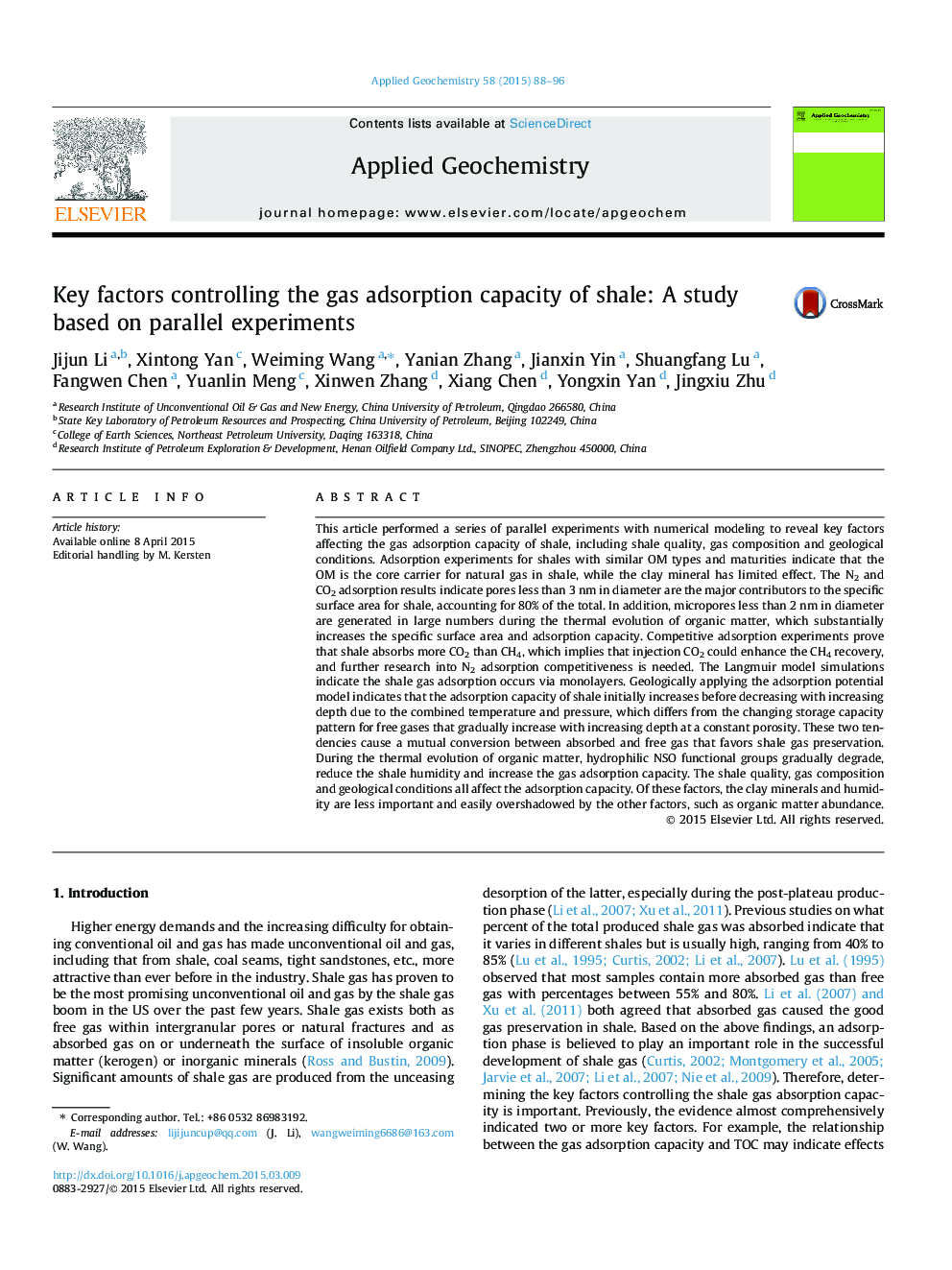| Article ID | Journal | Published Year | Pages | File Type |
|---|---|---|---|---|
| 4435656 | Applied Geochemistry | 2015 | 9 Pages |
•Revealed key factors controlling the shale gas adsorption capacity.•Discussed why certain factors affect the shale gas adsorption capacity.•A potential conversion occurs between absorbed and free gases.•The conversion between absorbed and free gas favors gas preservation.
This article performed a series of parallel experiments with numerical modeling to reveal key factors affecting the gas adsorption capacity of shale, including shale quality, gas composition and geological conditions. Adsorption experiments for shales with similar OM types and maturities indicate that the OM is the core carrier for natural gas in shale, while the clay mineral has limited effect. The N2 and CO2 adsorption results indicate pores less than 3 nm in diameter are the major contributors to the specific surface area for shale, accounting for 80% of the total. In addition, micropores less than 2 nm in diameter are generated in large numbers during the thermal evolution of organic matter, which substantially increases the specific surface area and adsorption capacity. Competitive adsorption experiments prove that shale absorbs more CO2 than CH4, which implies that injection CO2 could enhance the CH4 recovery, and further research into N2 adsorption competitiveness is needed. The Langmuir model simulations indicate the shale gas adsorption occurs via monolayers. Geologically applying the adsorption potential model indicates that the adsorption capacity of shale initially increases before decreasing with increasing depth due to the combined temperature and pressure, which differs from the changing storage capacity pattern for free gases that gradually increase with increasing depth at a constant porosity. These two tendencies cause a mutual conversion between absorbed and free gas that favors shale gas preservation. During the thermal evolution of organic matter, hydrophilic NSO functional groups gradually degrade, reduce the shale humidity and increase the gas adsorption capacity. The shale quality, gas composition and geological conditions all affect the adsorption capacity. Of these factors, the clay minerals and humidity are less important and easily overshadowed by the other factors, such as organic matter abundance.
